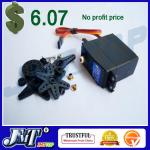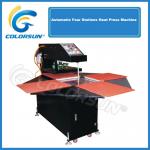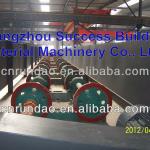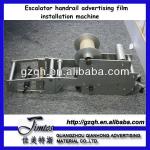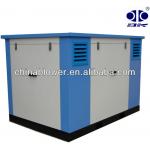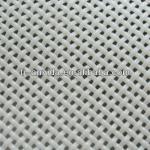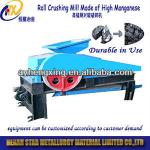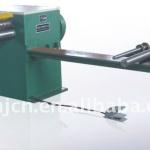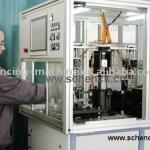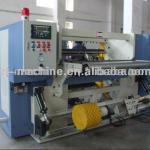Cooking Oil Equipment
| Place of Origin:Henan China (Mainland) | Brand Name:Holyphant | Model Number:Cooking Oil Plant | Condition:New |
| After-sales Service Provided:Engineers available to service machinery overseas | Cooking Oil Equipment:Coconut, Peanut, Soybean, Palm Oil, etc. | Certificate:CE, ISO9001 | Capacity:0.5-100T Oil Refinery Equipment |
| Professional engineer:we could supply rich experience engineer for installation | Successful cases:In Thailand, Nigeria, Poland, Uganda, Congo, Malawi, Cameroon, etc. | Physical Refinery:suggest for big capacity: 5-100T | Chemical Refinery:suggest for small capacity: 0.5-5T |
| Good Quality:good price, good service | Manufacturer:have our own factory | Full Process:Degumming--Deacid--Decolorizing--Deodorizing--Crystalizing |
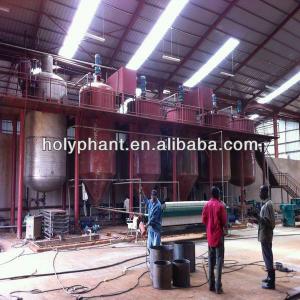
Refinery Step: Degumming--Deacid--Decolorizing--Deodorizing--Crystalizing
Degumming
Remove solubility impurity in the crude oil is degumming. Because phospholipid in a great part of solubility impurity in the crude oil.In industry, degumming also calls get rid of phospholipid. Before alkali refining, remove solubility impurity is a very useful way, it can reduce loss in the oil, increase oil quanlity, save alkali, and phospholipid can be got.
Crude oil is pumped out from the Buffer Tank. Passing through dosing system, the oil enters into the Heat Exchanger to recover part of heat. Heat the oil to design temperature(70°C)by Heater. The oil is mixed with dosed phosphoric/citric acid in Mixer. Mixture of oil and acid enters into the Mixer to change the un-hydrated phospholipids in oil into hydrated phospholipids. Add in alkali to neutralize the oil. Quantity of alkali added is determined by the quality of crude oil. The neutralized oil is heated to separation temperature(90°C)and then enters into the Centrifuge to remove the phospholipids, FFA and other impurities etc. Roughly 5-10% hot water is added into the oil to remove the residual soap in oil coming from Centrifuge. Generally temperature of hot water is 3-5 °C higher thanthat of oil. In order to get a more consistent washing effect, phosphoric/citric acid is added in. Mix oil and water in Mixer and heat it to 90-95 °C, then the mixture enters into the Centrifuge to separate the residual soap and most of the water. Water enters into the Separator to separate oil in water and separate the oil further by outside pool.
Decolorer
The aim of decolor is improve the color of oil, and supply the eligible oil to deodorizer. So the standard of oil should be made according to the demand of oil.Through decolorer, we should get the most change in the color, at the same time, keeping the lowest loss.
The oil firstly enters into Heat Exchanger to make heat exchange with the deodorized oil (a Heater will be extraly used at the beginning of starting up the plant). When the oil has been heated to design temperature (110°C), the oil is continuously mixed with clay proportioned by an automatic feeding system before entering Vacuum Bleacher. Then in time, during continuous agitation (by steam),the main part of color bodies as well as oxidizing materials in the oil are absorbed by the clay.After the bleacher, the oil/clay mixture is pumped to alternatively working filters and safety filter to remove clay in oil. The bleached oil tank is under vacuum to avoid contacting with air and thus cause color return and affect peroxide value of oil.
Deodorizing Section
Deodorizer not only remove the fetid impurity, increase oil smoke point, make better taste, but also improve oil stability, quanlity and chroma.At the same time,we can get rid of free fatty acid, peroxide, heat-sensitive coloring matter, protein in the mucid oil cake, polycyclic aromatic hydrocarbon, and residual pesticide residue. In the oil process, we always emphasized deodorizer.
The standard bleached oil enters into Heater, Heat Exchanger, and Heater, and the oil is heated to process temperature (240-260°C). Subsequently pump the oil to Deodorizer. The deodorizer is combined type: the upper is packed type to remove odor producing components such as free fatty acid; the bottom is plate type to get hot bleaching effect. Oil from the Deodorizer enters into the condenser to recover most of the heat and makes further heat exchange. Finally the oil is cooled to 80-85 °C by Cooler. Volatile from the deodorizing system is separated by FFA Scrubber. The separated liquid is FFA at 40-50 °C.
Fractionation of oils and fats Process
Dry fractionation of oils and fats is the separation of high-melting triglycerides from low-melting triglycerides by crystallization from the melt. Apart from blending, it is the cheapest process in oils and fats processing. It is a pure physical process compared to other chemical modification processes such as hydrogenation and interesterification which modify triglycerides. Dry fractionation is now applied to many kinds of fats: palm oil, anhydrous milk fat, tallow, fish oil, lard, cottonseed oil, sunflower seed oil, palm kernel oil, tallow butter fats, and special fats.
The most important applications are: palm olein used extensively as frying oil, palm super olein as salad oil and frying oil, the palm-mid fraction as component of cocoa butter equivalent, palm kernel stearin as cocoa butter substitute, anhydrous milk fat fractions for bakery and confectionery products, spreadable butter, tallow olein for frying oil and spreads. In this process, the fat is melted and heated to eliminate any crystal memory. The molten fat is cooled down under controlled agitation and cooling conditions to produce crystals nuclei formed by the higher melting triglycerides. Then, nuclei will grow to form crystals of the desired size. When the crystallisation has progressed far enough, the slurry is separated.

| Packaging Detail:wood & nude package |
| Delivery Detail:within 15-45 days |



